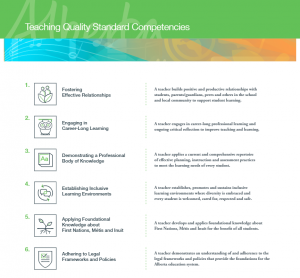Indigenous Culture-Based School Mathematics in Action: Part I: Professional Development for Creating Teaching Materials
- This first of a pair of articles describes a professional development project that prepared
four non-Indigenous mathematics teachers (Grades 5-12) to implement Canada’s Truth and
Reconciliation Commission’s (TRC, 2016) notion of reconciliation: cross-cultural respect through
mutual understanding
https://scholarworks.umt.edu/tme/vol18/iss1/9/
Meyer, Sharon and Aikenhead, Glen (2021) “Indigenous Culture-Based School Mathematics in Action: Part I: Professional Development for Creating Teaching Materials,” The Mathematics Enthusiast: Vol. 18 : No. 1 , Article 9.
__________
Indigenous Culture-Based School Mathematics in Action Part II: The Study’s Results: What Support Do Teachers Need?
- The research question: What precise supports must be in place for Grades 5 to 12 teachers to enhance their mathematics classes in a sustainable way with Indigenous mathematizing and Indigenous worldview
perspectives?
https://scholarworks.umt.edu/tme/vol18/iss1/10
Meyer, Sharon and Aikenhead, Glen (2021) “Indigenous Culture-Based School Mathematics in Action Part II: The Study’s Results: What Support Do Teachers Need?,” The Mathematics Enthusiast: Vol. 18 : No. 1 , Article 10.
_______
*June 20 – Edit*
I came across this resource that pulls together the above two pieces of research. It is from the McDowell Foundation, which provides grants for teacher-led research projects in Saskatchewan.
Culture-Based School Mathematics for Reconciliation and Professional Development


